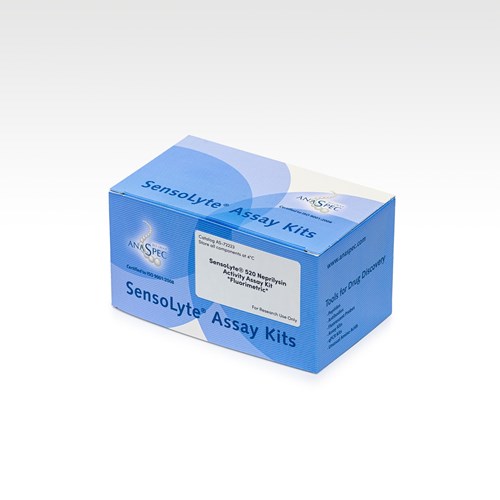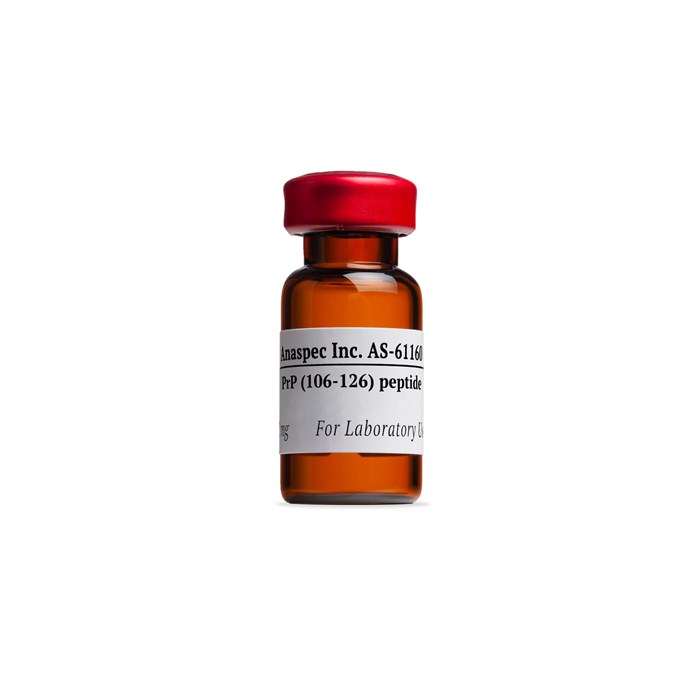PrP (106-126), prion protein - 1 mg
- Cat.Number : AS-61160
- Manufacturer Ref. :
-
Availability :
In production
Prion protein (PrP), also known as CD230, is mainly produced in the nervous sytem. PrP exists as different isoforms, among which the normal PrPc, and the 'scrapie' isoform PrPSc. PrPSc is misfolded and associated to multiple disorders including bovine spongiform encephalopathy, Gerstmann-Straüssler-Scheindker disease (GSS) and the Creutzfeldt-Jakob disease. It contains a much higher beta-sheet content than PrPc, and tends to form protease-resistant aggregates. A hypothesis to support the propoagation of these aggregates and their role in neurodegeneration is the change from normal PrPc to PrPSc triggered by its interaction with PrPSc (conformation conversion hypothesis).
PrP 127-147 forms filamentous structures ressembling scrapie-associated fibrils, but possesses a lower amyloidogenic potential than PrP 106-126.
This peptide increases membrane microviscosity, intracellular Ca2+ concentration and cell migration in circulating leucocytes, and oxygen production in monocytes and neutrophils. It also induces apoptotic cell death and impairment of L-type voltage-sensitive calcium channel activity in the GH3 cell lines. PrP (106–126) stimulates leucocyte migration in a dose-dependent manner.
Specifications
| Chemistry | |
| Sequence one letter code |
|
|---|---|
| Sequence three letter code |
|
| CAS registry number |
|
| Molecular Formula |
|
| Molecular Mass/ Weight |
|
| Modification | |
| Conjugation |
|
| Quantity & Purity | |
| Purity |
|
| Storage & stability | |
| Form |
|
| Storage Conditions |
|
| Activity | |
| Biomarker Target | |
| Research Area | |
| Sub-category Research Area | |
| Usage |
|
| Source | |
| Source / Species |
|
| Codes | |
| Code Nacres |
|
Downloads
You may also be interested in the following product(s)


